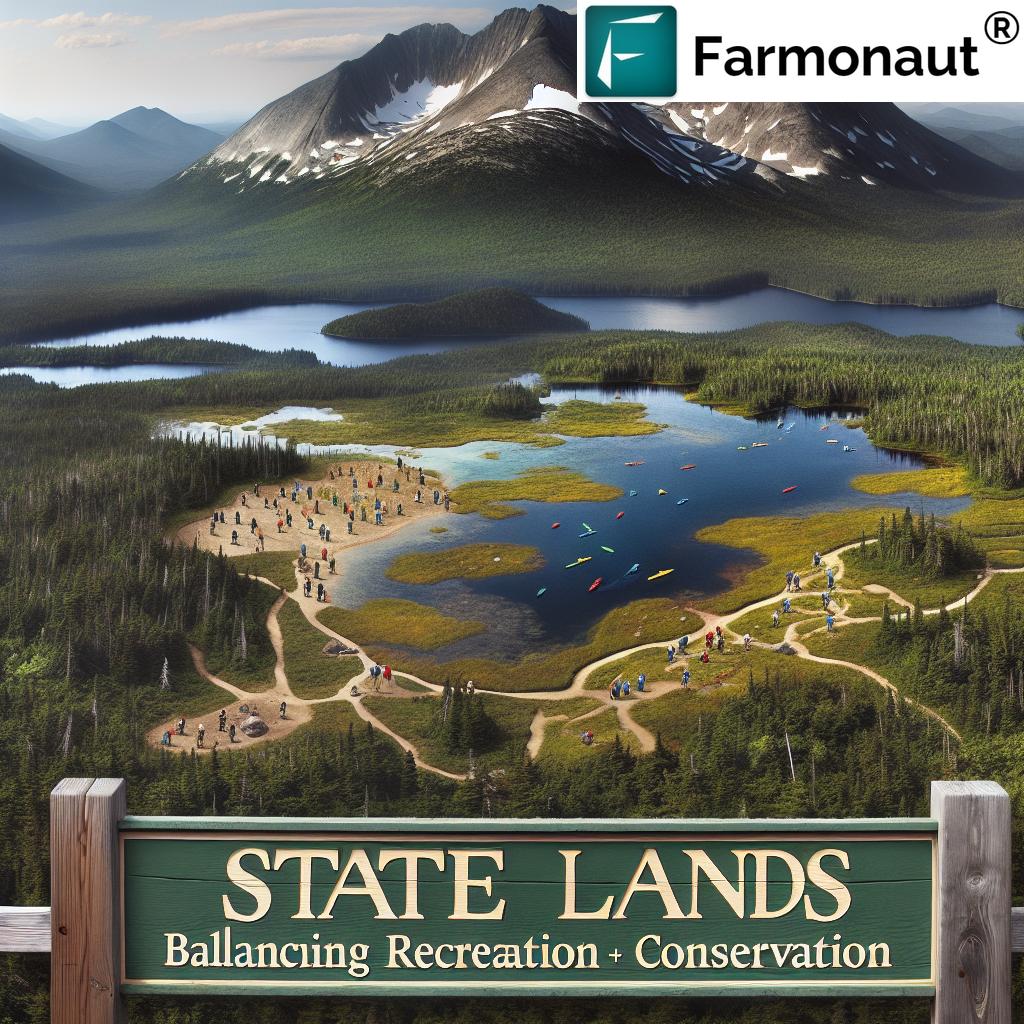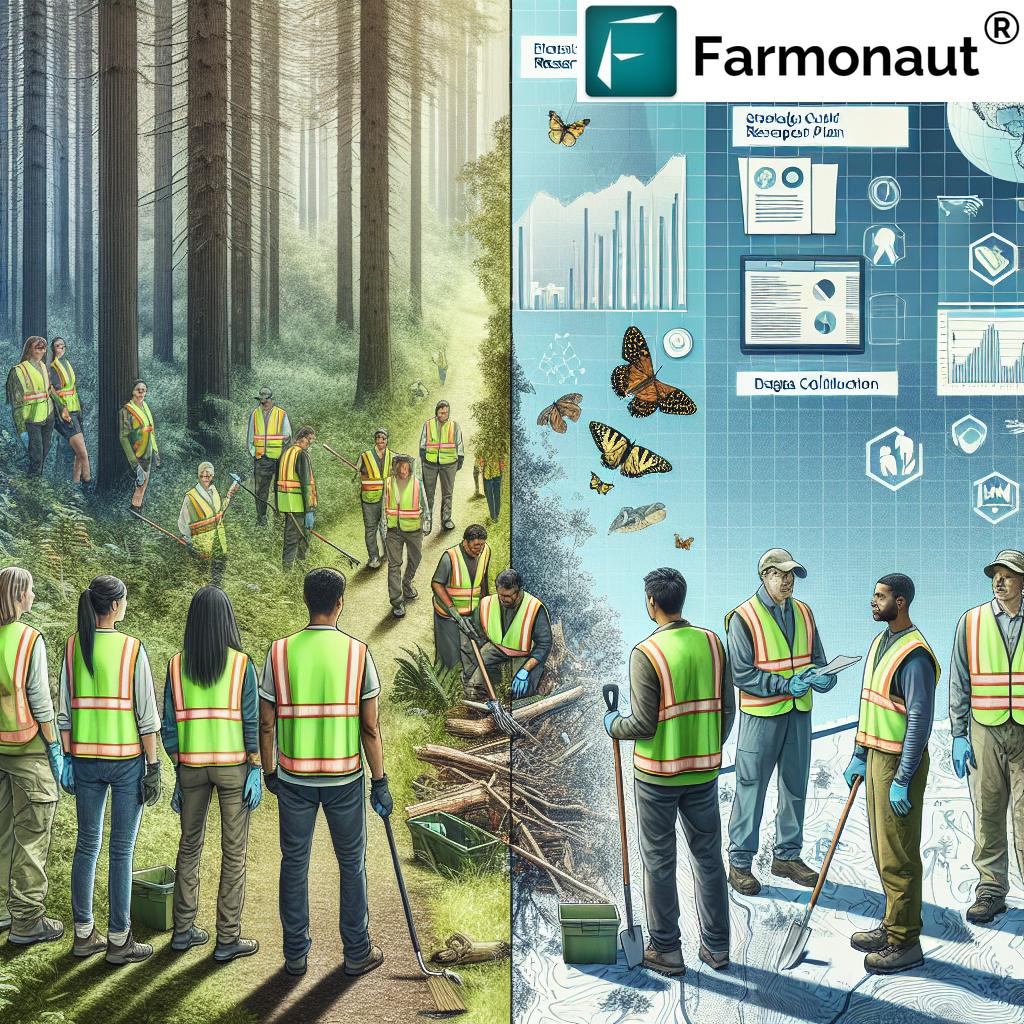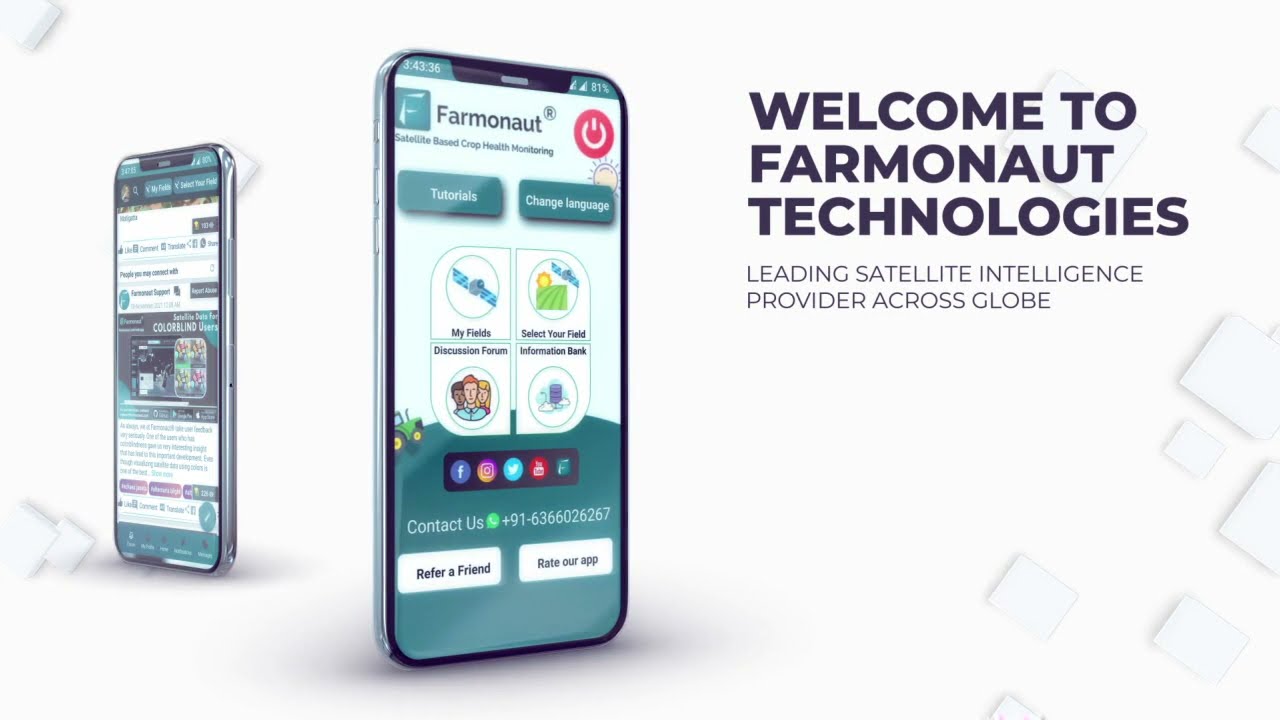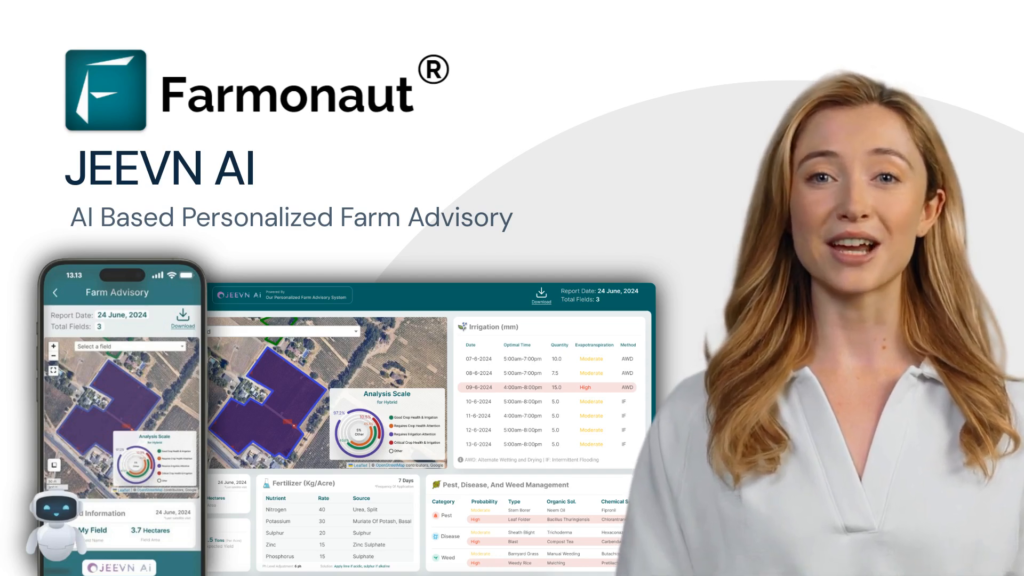Washington’s Outdoor Recreation Strategic Plan: Balancing Access and Environmental Conservation
“Washington’s outdoor recreation contributes $26.5 billion in spending and supports 264,000 jobs.”
As we delve into Washington’s ambitious outdoor recreation strategic plan, we find ourselves at the crossroads of accessibility and conservation. The Department of Natural Resources (DNR) has unveiled a comprehensive blueprint aimed at guiding responsible recreation on 5.6 million acres of state lands and waters. This plan represents a significant step forward in addressing the growing interest in public lands while carefully balancing environmental conservation and tribal cultural resources.

In this blog post, we’ll explore the key components of this strategic plan, its potential impact on outdoor enthusiasts and the environment, and the challenges that lie ahead in its implementation. We’ll also discuss how modern technology, such as satellite-based solutions offered by companies like Farmonaut, can play a crucial role in land management and conservation efforts.
The Need for a Strategic Approach
Washington state’s diverse landscapes, from the rugged Cascade Mountains to the serene coastal areas, have long been a magnet for outdoor enthusiasts. However, the surge in interest in hiking, mountain biking, and other recreational activities has put unprecedented pressure on these natural resources. This increasing demand necessitates a well-thought-out strategy to ensure sustainable access while preserving the environment for future generations.
The DNR’s new Outdoor Access and Responsible Recreation Strategic Plan is designed to address several critical questions:
- Who is recreating on DNR lands?
- How much outdoor recreation should be allowed?
- Who should patrol these vast holdings?
By focusing on these fundamental issues, the plan aims to create a framework for responsible land management that benefits all stakeholders.
Key Priorities of the Strategic Plan
The strategic plan outlines several priorities that will shape the future of outdoor recreation in Washington state:
- Improved Data Collection: One of the plan’s cornerstones is the more precise collection of visitation data. This information is crucial for understanding usage patterns and making informed decisions about resource allocation.
- Enhanced Tribal Consultation: Recognizing the importance of tribal cultural resources, the plan emphasizes improving mechanisms for consulting with tribes. This approach ensures that recreational activities do not infringe upon sacred sites or traditional practices.
- Tackling Vandalism and Illegal Dumping: The plan proposes new approaches to curb vandalism and illegal dumping, which have been persistent problems in many public lands.
- Increased Law Enforcement: To better manage and protect these vast areas, the plan calls for hiring more DNR law enforcement personnel.
These priorities reflect a holistic approach to land management, balancing recreational access with environmental stewardship and cultural respect.
The Economic Impact of Outdoor Recreation
While the strategic plan focuses on management and conservation, it’s important to recognize the significant economic impact of outdoor recreation in Washington state. According to a 2020 study by Headwaters Economics, outdoor recreation was responsible for:
- $26.5 billion in spending
- Supporting 264,000 jobs
These figures underscore the importance of outdoor recreation not just as a leisure activity, but as a vital component of the state’s economy. The challenge lies in fostering this economic activity while ensuring the long-term health of the natural environment.
Balancing Access and Conservation
One of the central tensions addressed in the strategic plan is the balance between expanding recreational opportunities and protecting the environment. The plan acknowledges that increased outdoor recreation in the Pacific Northwest poses a growing threat to the region’s long-term environmental health, especially as it relates to tribal treaty rights.
The Tulalip Tribes, for instance, have noted that recreational uses of upland areas can displace traditional spiritual practices or adversely affect natural resources. This can include trampling culturally significant plant communities or altering elk herd movements due to human activity.
To address these concerns, the plan proposes:
- Developing more sustainable trail systems
- Implementing education programs for visitors about environmental and cultural preservation
- Creating designated areas for high-impact activities to minimize widespread environmental damage
By taking these steps, the DNR aims to create a framework that allows for increased access while minimizing negative impacts on the environment and tribal resources.
The Role of Technology in Land Management
As we look to the future of land management and conservation, technology will play an increasingly important role. Innovative solutions, such as those offered by Farmonaut, can provide valuable tools for monitoring and managing large areas of land efficiently.
Farmonaut’s satellite-based farm management solutions, while primarily focused on agriculture, demonstrate the potential for similar technologies to be adapted for public land management. Features such as real-time monitoring, AI-based advisory systems, and resource management tools could be invaluable for agencies like the DNR in implementing their strategic plans.

For example, satellite imagery could be used to:
- Monitor trail conditions and usage patterns
- Identify areas of environmental stress or degradation
- Track wildlife movements and habitat changes
By leveraging such technologies, land managers can make more informed decisions and respond quickly to emerging issues.
Funding Challenges and Implementation
While the strategic plan provides a comprehensive roadmap for managing outdoor recreation on state lands, its implementation faces significant funding challenges. The DNR’s two-year recreation budget is $34 million, but there’s already a projected $9 million shortfall to meet existing obligations before any new proposals are implemented.
This financial constraint poses a serious challenge to the full realization of the plan’s objectives. It underscores the need for creative solutions and partnerships to bridge the funding gap and ensure the plan’s success.
“The Department of Natural Resources’ new plan aims to guide recreation on 5.6 million acres of state lands and waters.”
The Importance of Volunteer Organizations
In light of budget constraints, volunteer organizations play a crucial role in supporting trail maintenance and stewardship efforts across Washington’s diverse landscapes. Groups like the Issaquah Alps Trail Club provide invaluable support in maintaining and improving recreational areas.
These volunteer efforts not only help stretch limited resources but also foster a sense of community ownership and stewardship of public lands. As Kelly Jiang, president of the Issaquah Alps Trail Club, notes, “It’s incumbent upon people who love these recreation lands to step up.”
Looking to the Future
As Washington state moves forward with its outdoor recreation strategic plan, it’s clear that success will require a collaborative effort involving state agencies, tribal governments, volunteer organizations, and the public. The plan provides a solid foundation for addressing the complex challenges of balancing recreational access with environmental conservation and respect for tribal cultural resources.
However, the ultimate success of this initiative will depend on several factors:
- Securing adequate funding for implementation
- Fostering strong partnerships with tribal nations and local communities
- Leveraging technology to enhance management capabilities
- Encouraging public engagement and volunteerism
- Adapting strategies as new challenges and opportunities arise
By addressing these factors and remaining committed to the plan’s core principles, Washington can set a new standard for responsible outdoor recreation management that benefits both people and the environment.
Washington’s Outdoor Recreation Strategic Plan – Key Components
| Component | Description | Potential Impact |
|---|---|---|
| Data Collection Improvement | Enhance precision in gathering visitation data and usage patterns | High (Recreation Access), Medium (Environmental Conservation) |
| Tribal Consultation Enhancement | Improve mechanisms for consulting with tribes on land use decisions | Medium (Recreation Access), High (Environmental Conservation) |
| Vandalism and Illegal Dumping Mitigation | Implement new approaches to reduce environmental damage | Medium (Recreation Access), High (Environmental Conservation) |
| Budget Allocation | Address $9 million shortfall in DNR’s recreation budget | High (Recreation Access), High (Environmental Conservation) |
| Volunteer Organization Involvement | Leverage community support for trail maintenance and stewardship | High (Recreation Access), Medium (Environmental Conservation) |
Leveraging Technology for Land Management
As we consider the future of land management in Washington state, it’s worth exploring how cutting-edge technologies can support the goals outlined in the strategic plan. While not directly involved in public land management, companies like Farmonaut demonstrate the potential of satellite-based solutions in monitoring and managing large areas of land.
Farmonaut’s platform, which provides valuable services such as real-time crop health monitoring, AI-based advisory systems, and resource management tools, could inspire similar applications for public land management. For instance:
- Satellite imagery could be used to monitor trail conditions and identify areas in need of maintenance
- AI-driven systems could help predict usage patterns and allocate resources more efficiently
- Resource management tools could assist in tracking and optimizing the use of equipment and personnel across vast areas of public land
While Farmonaut’s focus is on agricultural applications, the underlying technologies and methodologies could be adapted to support the DNR’s efforts in implementing its strategic plan. By embracing such innovations, Washington state could enhance its ability to balance recreational access with environmental conservation.
The Role of Public-Private Partnerships
As the DNR faces budget constraints in implementing its strategic plan, exploring public-private partnerships could provide valuable resources and expertise. While maintaining the integrity of public lands, collaborations with technology companies, environmental organizations, and outdoor recreation businesses could offer innovative solutions to management challenges.
For example:
- Tech companies could provide data analytics and monitoring tools
- Environmental organizations could assist with conservation efforts and educational programs
- Outdoor recreation businesses could contribute to trail maintenance and responsible use initiatives
These partnerships, when carefully structured, can help bridge funding gaps and bring specialized knowledge to support the DNR’s goals.
Education and Outreach: Key to Responsible Recreation
A critical component of the strategic plan’s success will be educating the public about responsible recreation practices. By fostering a culture of stewardship among outdoor enthusiasts, the DNR can reduce the negative impacts of increased visitation and protect sensitive ecosystems.
Educational initiatives could include:
- Interpretive signage at trailheads and popular sites
- Online resources and mobile apps providing information on Leave No Trace principles
- Partnerships with schools and community organizations for environmental education programs
- Ranger-led programs focusing on the ecological and cultural significance of public lands
By empowering visitors with knowledge and fostering a sense of responsibility, these efforts can help mitigate the environmental challenges associated with increased outdoor recreation.
Adaptive Management: Responding to Changing Needs
As Washington implements its outdoor recreation strategic plan, it’s crucial to adopt an adaptive management approach. This flexible strategy allows for adjustments based on new data, changing environmental conditions, and evolving recreational trends.
Key elements of adaptive management include:
- Regular monitoring and assessment of plan outcomes
- Flexibility to modify strategies based on new information
- Ongoing stakeholder engagement to gather feedback and ideas
- Incorporation of new technologies and management practices as they emerge
By remaining adaptable, the DNR can ensure that its approach to outdoor recreation management remains effective and responsive to the needs of both the environment and the public.
Conclusion: A Balanced Future for Washington’s Outdoors
Washington’s Outdoor Recreation Strategic Plan represents a significant step forward in addressing the complex challenges of managing public lands in an era of increasing outdoor enthusiasm. By focusing on data-driven decision-making, enhanced tribal consultation, and innovative approaches to conservation, the plan lays a foundation for a more sustainable and inclusive outdoor recreation landscape.
While funding challenges and implementation hurdles remain, the collaborative spirit embodied in the plan – involving state agencies, tribal nations, volunteer organizations, and potentially private sector partners – offers a promising path forward. As we look to the future, the success of this initiative will depend on continued commitment, adaptability, and a shared vision of responsible stewardship.
By embracing new technologies, fostering public engagement, and maintaining a delicate balance between access and conservation, Washington can set a national example for managing outdoor recreation in a way that benefits both people and the environment. As outdoor enthusiasts, conservationists, and citizens, we all have a role to play in supporting and shaping this vision for the future of Washington’s public lands.
FAQ Section
Q: What is the main goal of Washington’s Outdoor Recreation Strategic Plan?
A: The main goal is to guide responsible recreation on 5.6 million acres of state lands and waters while balancing environmental conservation and respecting tribal cultural resources.
Q: How does outdoor recreation impact Washington’s economy?
A: Outdoor recreation contributes $26.5 billion in spending and supports 264,000 jobs in Washington state.
Q: What are some key priorities outlined in the strategic plan?
A: Key priorities include improving data collection, enhancing tribal consultation, tackling vandalism and illegal dumping, and increasing DNR law enforcement presence.
Q: What challenges does the plan face in implementation?
A: The main challenge is funding, with a projected $9 million shortfall in the DNR’s recreation budget.
Q: How can technology support the goals of the strategic plan?
A: Technologies like satellite imagery and AI-driven systems can help monitor land use, predict usage patterns, and optimize resource allocation for more effective management.
Q: What role do volunteer organizations play in supporting public lands?
A: Volunteer organizations are crucial for trail maintenance, stewardship efforts, and fostering community engagement with public lands.
Q: How does the plan address the balance between recreation access and environmental conservation?
A: The plan proposes sustainable trail systems, education programs, and designated areas for high-impact activities to minimize environmental damage while allowing for increased access.
Q: How can the public contribute to the success of this strategic plan?
A: The public can contribute by practicing responsible recreation, participating in volunteer efforts, and engaging in educational programs about environmental stewardship.
Earn With Farmonaut: Affiliate Program
Earn 20% recurring commission with Farmonaut’s affiliate program by sharing your promo code and helping farmers save 10%. Onboard 10 Elite farmers monthly to earn a minimum of $148,000 annually—start now and grow your income!
For more information on Farmonaut’s innovative solutions, visit our web app, explore our API, or check out our API Developer Docs.
Download our mobile apps:



















